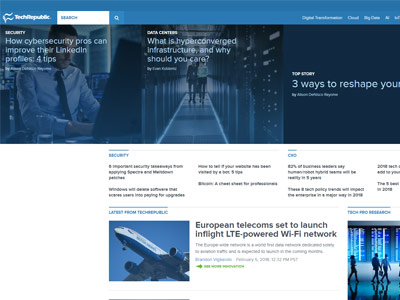Comprehending the Increase of Side Computer in Today's Digital Globe
In the rapidly progressing landscape of technology, side computer becomes a crucial force, reshaping exactly how information is refined and used. This standard change is driven by the expansion of IoT tools and a rising need for immediate information processing. By transitioning data monitoring closer to the source, side computing addresses essential latency issues while enhancing data transfer use and enhancing safety procedures. As industries pivot towards smarter, a lot more effective systems, comprehending the nuances and implications of this technical development comes to be important. What does this mean for future developments and the electronic ecosystem in its entirety?
What Is Edge Computing
Side computer, although a fairly recent development in the world of modern technology, essentially transforms just how information is refined and managed by bringing computation and data storage closer to the place where it is needed. Unlike conventional cloud computer models, which usually depend on central information centers that can be geographically distant, side computer decentralizes information handling. This proximity lowers latency, boosts real-time data processing, and boosts the overall customer experience by making sure faster reaction times.
At its core, edge computer involves a network of localized tools and infrastructure, such as gateways, sensing units, and routers, with the ability of processing information at or near the source. This localized processing ability is specifically essential for applications needing immediate information evaluation, such as self-governing vehicles, industrial automation, and clever cities. Furthermore, by offloading data processing jobs from main servers, side computing lowers data transfer demands and boosts data personal privacy and safety and security, as delicate info can continue to be on-site instead of traversing considerable networks.

Trick Motorists of Adoption
Several variables are driving the fostering of edge computer in today's digital landscape. Edge computing addresses this requirement by enabling information processing closer to the information source, decreasing latency and boosting real-time decision-making capacities.
One more considerable chauffeur is the demand for boosted bandwidth efficiency. Central cloud systems can become overloaded with the sheer volume of information produced by IoT devices, causing bottlenecks (Best tech blog). By refining data at the side, organizations can ease network blockage and improve overall system efficiency
Furthermore, security and personal privacy issues are pressing organizations towards edge computing. By refining delicate information in your area, firms can alleviate dangers connected with information transmission and exposure to possible cyber risks.
The surge of applications requiring real-time processing, such as independent vehicles and boosted reality, additionally requires the fast reaction times that edge calculating supplies. Jointly, these chauffeurs are making edge calculating a vital element of modern IT infrastructure, paving the method for its prevalent fostering across different markets.
Advantages Over Cloud Computing
Exactly how does edge computing distinguish itself from standard cloud computing? Largely, side computer brings data processing closer to the source of information generation, frequently on regional devices or neighboring servers, instead than depending on central information.
Moreover, side computing enhances bandwidth effectiveness (Best tech blog). By processing information locally, only the required information is transferred to the cloud for more evaluation or storage space, minimizing the volume of information that passes through the network. This not only alleviates network congestion however likewise decreases data transmission costs
Edge computer likewise uses improved information privacy and protection. Sensitive data can be processed in your area without being sent out to the cloud, lessening the exposure to prospective cyber dangers. This is specifically valuable for fields handling secret information, such as health care and financial services.
In addition, side computing makes certain higher strength and reliability. Regional processing permits proceeded procedure also when connection to the cloud is endangered, preserving necessary functions and services regardless of possible network disruptions. These advantages collectively demonstrate edge computer's transformative potential in optimizing efficiency and safety and security in electronic ecosystems.
Obstacles and Factors To Consider
While edge computing supplies numerous advantages, it additionally offers unique challenges and considerations that have to be addressed to fully realize its possibility. One significant difficulty is data security and privacy. Handling information closer to the resource enhances the threat of unapproved gain access to, necessitating durable security and stringent protection protocols to shield sensitive info. Additionally, handling and monitoring a decentralized network of edge devices can be complicated, calling for innovative devices and methods to ensure smooth operation and upkeep.
One more consideration is the scalability of edge computer solutions. As the variety of connected devices grows, so does the demand for processing power at the edge, which can bring about resource restrictions. Organizations needs to meticulously prepare their framework to fit this development without jeopardizing efficiency or performance.
Interoperability is an additional essential factor. With various software and hardware components involved, making sure compatibility and smooth assimilation can be difficult. Standardization efforts are vital to promote useful site interaction in between inconsonant systems.
Future Trends in Edge Computing
Anticipating the future, edge computing is poised to transform various industries by making it possible for faster data processing and minimizing latency. As the quantity of data generated by IoT tools proceeds to grow, edge computer will become progressively vital in handling this influx effectively. One substantial trend is the combination of expert system at the side, permitting real-time analytics and decision-making without depending on cloud-based sources. This shift is expected to improve applications in autonomous lorries, clever cities, and health care, where instant data processing is important.
Another emerging pattern is the advancement of edge-native applications created especially to leverage the one-of-a-kind abilities of side computing. These applications will certainly enhance efficiency and source application, leading to boosted performance across numerous industries. Developments in 5G technology will additionally strengthen edge computing by giving the necessary framework for high-speed, low-latency communication in between tools and edge nodes.
Conclusion
Side computer's increase is driven by the expansion of IoT devices and the demand for real-time information handling, which boosts performance by lowering latency and decentralizing information management. This approach minimizes bandwidth inadequacies and security concerns, assisting in improvements in applications like wise cities and autonomous web vehicles. Despite difficulties such as facilities intricacy and integration, the future of side computer promises a much more responsive digital environment, with proceeded technologies forming its evolution and expanding its applicability across industries.
Side computing, although a reasonably recent improvement in the realm of innovation, basically transforms exactly how data is processed and taken care of by bringing computation and information storage space closer to the location where it is required. Unlike traditional cloud computer designs, which commonly rely on central data facilities that can be geographically distant, edge computer decentralizes information handling. Additionally, by offloading information handling jobs from central web servers, side computer minimizes data transfer needs and improves data personal privacy and safety, visit as sensitive details can continue to be on-site instead than going across extensive networks.
